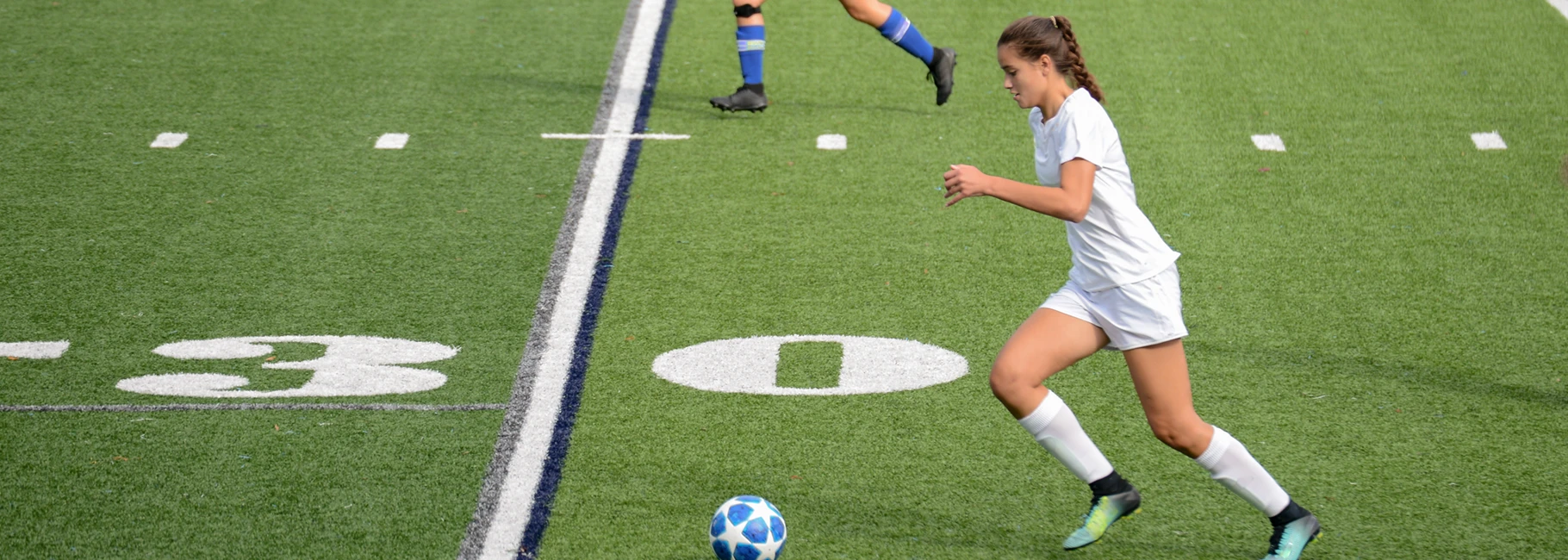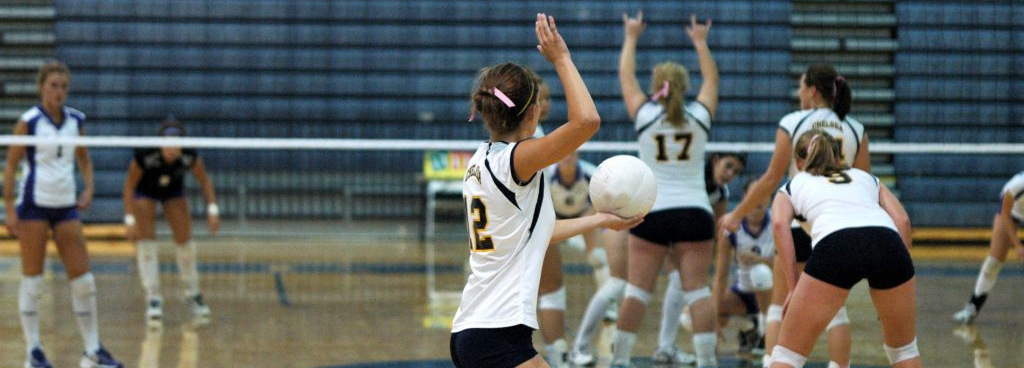Division I Athletic Recruitment: What Students Need to Know

By an IvyWise College Admissions Counselor
Just like playing slots in a casino where the outcome is not something you can predict with any degree of certainty, so, too, is the game of collegiate athletic recruitment. In light of the Operation Varsity Blues scandal, the college admissions process and particularly athletic recruitment practices have come under heavy scrutiny, but the process is actually much more complicated and selective than many believe. Here’s a look at what really goes into being recruited as an athlete at the Division I level.
Understanding the slot odds and the inner workings of the athletic recruitment game is beneficial to high school athletes who want to play a collegiate sport. Particularly at the Division I level, there are actual slots you will be vying for to be an official recruited athlete. What every high school athlete should know is that at the end of the day, the athletic talent of a student is the most important factor to the head coach. After all, they want you to come and perform well on their team, right? But the admissions office also has to balance the academic requirements of the athlete, too.
Being a Recruited Athlete
To be a recruited athlete at the Division I level, a college coach must choose a high school athlete they know can compete. The odds for high school athletes are staggering. According to the NCAA, out of the approximately 8 million (yes — MILLION!) high school athletes, less than 7% actually compete in a collegiate sport. That percentage is even lower for students who are aiming for Division I programs.
When considering Division I schools, there are really two divisions of programs: major and mid-major. Major programs are the ACC, SEC, BIG 10, BIG 12, and Pac 12. The rest of the Division I programs, which includes the Ivy League for example, are considered mid-major. There are major college programs within these other leagues like UCONN, but these major athletic league conferences are known as the “Power Five” for a reason. Their power comes from the how financially lucrative their athletic programs tend to be, as well as their ability to produce the highest number of pro athletes.
For many top athletic recruits sponsored by coaches, their athletic talent is their “hook” in the actual admissions process. While these athletes can do the work academically in college, their academics may not be at the top of an applicant pool because they have spent so much time dedicated to their sport. This isn’t always the case, however. There are plenty of top-recruited athletes that are also exceptional students, and athletes who are in good academic standing make the coach’s job that much easier when they collaborate with the admissions office.
Besides being a good student, the best way to be noticed by a coach is to attend three to five summer camps to get on the coach’s radar. The best coaches, and in particular Division I coaches, do not need to use recruiting sites or see film to find their top recruits. They are good enough to notice you through club teams, national rankings, US National teams, or camps, as well as through their personal contacts within their sport. For Division II and III programs, it may be advantageous to use recruiting sites or videos, but typically these outlets are not necessary for Division I athletic recruits. Overall, it is advisable to start this recruiting process early to be considered for one of these coveted slots.
It is also wise to be knowledgeable about what type of coach the recruits have put themselves under. Like any working relationship, a recruit wants to find the right match with the head coach. At some point, athletes who have been trying to be recruited should start to lean towards those coaches who are seriously recruiting them and seem like the best fit for their needs and goals.
The Admission Process
Division I athletic coaches can have significant influence when supporting their top recruits in the admissions process. This is not the case for Division II or III coaches, where they have less power but still can have some influence in the admissions process. The Division I athletic department and each individual head coach are allowed so many slots a year to use in the admissions process. Typically, these slots are grouped according to the individual college’s admissions standards. For example, a university may have slots where Slot A recruits have scored a 32 ACT or higher who have achieved a 3.7- 4.0 unweighted GPA, Slot B recruits have obtained a 26-31 ACT and a 3.2-3.6 GPA, and Slot C recruits which have a 25 ACT or below and with a GPA of 3.1 or below. A coach may have five A slots, three B slots and only two C slots to offer to recruits and to use in the admissions process. The initial recruitment pool for a coach could be 100 potential athletes worldwide for those few slots. The coaches will likely give commitments to more students than their allotted slots in order to best yield their recruitment class. Depending on the outcome of each coach’s slots and the athletic departments total slots in the early action/early decision rounds, a coach can gain a slot back in regular decision.
Having a specialty or a “hook” can go a long way towards helping students standing out in the highly-selective admissions process, and for recruited athletes, giving a verbal commitment to an interested coach could be that hook they need to have a better chance of admission. The test score and grade requirements will vary from college to college, so it is important to ask the coaches their expectations for grades and scores.
It’s also important to keep in mind that some coaches over recruit their classes. Before the fall of your junior and senior years, take a straight shooter approach with the coaches and ask where you are on their depth chart. If they do eventually offer you a spot on their team, then ask how many other high school athletes they have offered this spot too. The reason for the direct conversation is that a coach may only have two slots to offer a high school athlete, yet they have to offer more to yield their recruitment class though the admissions process. One college coach may offer four athletes to yield two slots while another coach may offer 10 athletes for two actual slots available to them. If all 10 athletes apply under the assumption they will be admitted, then the coach has over recruited and some recruits will suffer as the coach’s pull in the admission process will only be for two slots. In this situation, you need to understand where you are on their depth chart, especially if you have more than one college pursuing you for their team. If a high school student is uncomfortable being direct with a college coach, then it is perfectly acceptable for a high school athlete’s club or high school coach to call on their behalf and ask the college coach where they actually are on their recruitment list.
In summary, the athletic recruitment process can be just as competitive as the selective college admissions process. While being an athlete can give students a “hook” in the admissions process, a slot is not always guaranteed based on the coach’s recruiting and the admissions office’s input. Again, here’s what recruited athletes need to keep in mind during this process:
- Keep up your academics. While being a recruited athlete can be a “hook” in the selective admissions process, it doesn’t guarantee admission. Colleges will still look at your GPA, test scores, and more in order to determine academic eligibility and if you meet the academic standards of the school. Don’t slack off in the classroom!
- Get in front of the coaches in order to be seen. If you’re a serious athlete, participate in camps and send footage, if applicable.
- Work hard to improve your skills. Just because you’re being recruited doesn’t mean you don’t need to keep improving. In addition to keeping up your grades continue to improve in your sport in order to stand out.
- Lean towards those schools that are showing serious interest in you. Just like when demonstrating interest during the college admissions process, you want to focus on coaches/teams that are most interested in you. Don’t waste your time on schools that are not serious about your recruitment.
- Be a straight shooter and ask where you are in their depth chart. This can help you better gauge how likely you are to be admitted as an athlete.
- Be wise in choosing the best-fit program and coach. Just like when choosing a best-fit college you want to find a program/coach that is a good fit for your abilities and goals.
- Be open to other colleges that show interest in you. You may have your heart set on a certain school or coach, but don’t be afraid to explore all your options. You may find that a school or program you never considered before is actually a great fit for you.
- Remember to have fun playing your sport! At the end of the day you’re an athlete because you love the sport that you play or participate in. Don’t lose sight of your passion during this process and enjoy the journey.
At IvyWise, we work with students to help them through all aspects of the college admissions process, including athletic recruitment. This includes helping students understand what it means to be a recruited athlete and to help them navigate process in order to find the school and athletic program that best fits their needs and goals. Contact us today for more information on college counseling and athletic recruitment services.
Get the IvyWise Newsletter
Related Posts

The Benefits of Athletics at a Division III College
So, you’re a high-level athlete who wants to compete collegiately. You’ve committed time, effort, and energy to being the best athlete you can be, competing for your high school team, your club team, working on speed and agility, lifting weights, and developing your skill set.

Your Step-by-Step Athletic Recruitment Plan
Many high school athletes dream of continuing to play their sport at the collegiate level, but it’s important for students to understand the basics of the athletic recruiting process before deciding if it’s an avenue they want to pursue.
At IvyWise, our admissions counselors are experts at every component of the college admissions process, including athletic recruitment. Experts who have led students through their athletic recruitment process — both from the admissions office and the counseling office — have created this step-by-step plan for student athletes interested in pursuing the athletic recruitment process.

What Is College Life Like?
For many young adults, college offers the first taste of independence, an opportunity to make lifelong friendships, and a chance to learn important life skills. However, college life isn’t the same for everyone. Every student will have a unique college experience, but certain elements of campus life are universal.
